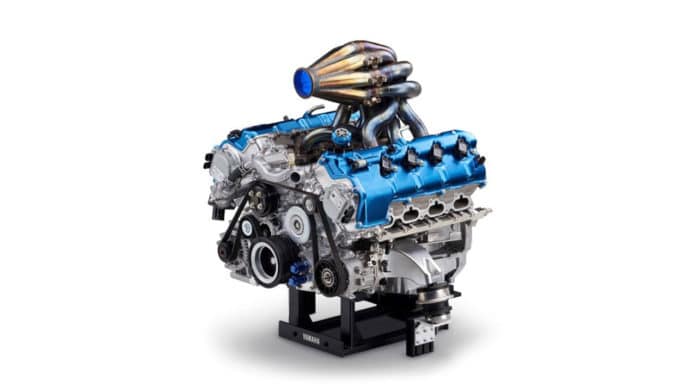Yamaha Motor and Toyota Motor Corporation have joined forces to develop a 5.0-liter V8 engine for automobiles that is fueled entirely by hydrogen. In Japan, Toyota and other automotive-related companies are about to begin a collaborative effort to expand the range of fuel options for internal combustion engines. Toyota has already been running a hydrogen-adapted GR Yaris engine fitted to one of its Corolla models in the Super Taikyu race series in Japan.
The new hydrogen engine is based on the 5.0-liter engine in the Lexus RC F luxury sport coupe, with modifications made to the injectors, cylinder heads, intake manifold, and other elements. Yamaha claims that it offers 450 hp at 6,800 rpm and a maximum of 540 Nm of torque at 3,600 rpm. That’s a bit smaller than those of the original V8 it is based on, but for a newly developed experimental engine, they are more than good enough.
“Hydrogen engines have an innately friendly feel that makes them easy to use even without resorting to electronic driving aids,” said Takeshi Yamada from the Technical Research & Development Center’s Automotive Development Section. “Everyone who came to test-drive the prototype car would start off somewhat skeptical but emerged from the car with a big smile on their face at the end.”
The two companies have already had fruitful collaborations before. They partnered on the Lexus LFA hypercar’s 552bhp 4.8-liter V10, a venture that proved very successful. Now the carmakers are forcing on more eco-friendly alternatives.
“Hydrogen engines house the potential to be carbon-neutral while keeping our passion for the internal combustion engine alive at the same time,” proclaimed President Hidaka at the venue.
One particular feature that Yamaha highlights is the raucous sound of the V8 engine, which can be preserved by adapting it to burn another type of fuel. Toyota said the same of the hydrogen-powered GR Yaris’ H2′ concept it showed last year, reinforcing the technology’s potential to serve the sports car segment in particular.
